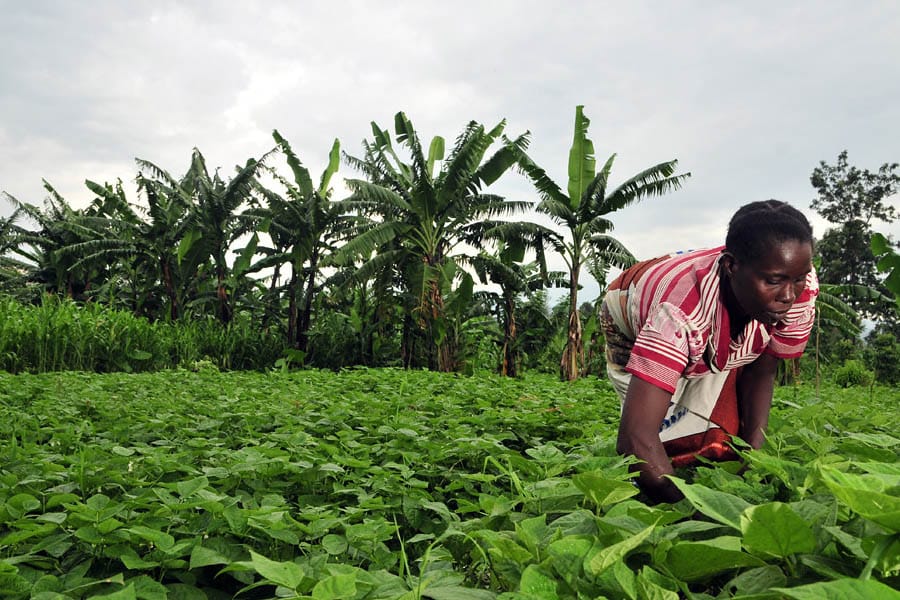The government of the Democratic Republic of the Congo (DRC) made a commitment in 2013 to prioritize the sustained improvement of agricultural production as part of the National Agriculture Investment Plan (PNIA) of the Comprehensive Africa Agriculture Development Programme. The term “Conservation Agriculture” (CA) refers to a management strategy centered on three complementary tenets: (i) no or little mechanical disturbance of the soil on a continuous basis, (ii) a mulch layer that is kept in place year-round, and (iii) a rotation of crops to avoid soil monotony. Due to its potential extensive advantages in economic, environmental, and social realms, CA is a promising idea for sustainable agriculture.

Benefits of Conservation Agriculture
When compared to the prevalent practice of slash-and-burn agriculture in the DRC, the economic advantages of CA are measured in the amount of time and effort saved by farmers. Farmers who began using CA spent far less time weeding their fields than their counterparts who did not. Weeds are less of a problem when there is a lot of mulch on the ground, therefore there is less need to weed.
Potentially higher yields are another economic benefit. One of the key agronomic advantages of CA is that it improves soil structure and increases organic matter, both of which make the land more productive. Because of this, water and nutrients are utilized more effectively, which has the ability to both protect the soil and boost agricultural output. Financial gains (from increased yields) and cost savings may result from adding organic matter to boost fertility (reducing the need for inorganic fertilizer). Soil erosion prevention and carbon sequestration are two environmental benefits that make California an attractive location for climate-smart farming, and these advantages are mostly the consequence of mulching and the decrease of deforestation due to slash-and-burn techniques.
Factors Driving CA adoption
Scholars in DRC took an interest in agricultural inventions since so many DRC farmers depend on subsistence farming and many of these tools are designed to boost crop yields and hence farmers’ incomes. Most respondents who were asked about the factors that influence a farm’s choice to implement CA cited farm size, education, financial prosperity, and, to a lesser extent, age and risk perception. There are four types of exogenous variables that influence CA adoption: farm biophysical aspects, farm financial/management traits, and other external variables. The adoption of soil conservation measures is influenced by a number of variables, including those that are unique to the farm, the farmer, the technology, and the institutions involved. Each nation, region, or even village will have its own unique set of factors that contribute to adoption.
Increased CA adoption was seen among credit-using farmers. The adoption of CA in low-income farming areas may be boosted by a CA program that expands farmers’ access to financing. It seems that farmers who are unable to access loans are less likely to adopt CA, which might lead to a worsening of food insecurity, poverty, and the slowing of the DRC’s transition from a slash-and-burn agricultural system to one that better takes use of the ecosystem services. Various variables’ impacts varied across regions for a variety of reasons. Training in CA unquestionably boosts uptake. It’s possible that investing in CA training for single women may yield significant results.
Economic Benefits of CA
Adaptation to climate change and the resulting sensitivity of farmers, the reduction of greenhouse gas emissions, and improved ecosystem functioning and services are just some of the long-term advantages of CA. Since CA has the ability to store subsurface moisture more effectively, its advantages would be especially crucial for locations ravaged by drought throughout Africa. By reducing labor-intensive duties like ploughing and weeding, CA helps smallholder farmers satisfy their requirement to spend less time on agricultural output (per unit of land) and free up more time to focus on other aspects of their businesses.
Looking specifically at how CA affected food availability, we can conclude that it had no discernible effect on the food consumption score. The average productivity and farm net income for maize, beans, bananas, and cassava all increased after using CA, a new method for managing crops. When intercropping was also included in CA, it increased crop returns for smallholder farmers, particularly the poorest among them.
Access to Mechanization
As one of the leading tractor dealers in DRC, Tractors PK is well-equipped to ensure that farmers in the country have access to CA equipment, especially no-till planters. Pakistan is a major supplier of agricultural machinery to the Democratic Republic of the Congo. This includes a wide variety of tractors and no-till planter types. What kinds of agricultural machinery are needed for what kinds of CA chores by smallholder farmers vary widely by country, region, and even neighborhood. The private sector may supplement government efforts by providing agricultural machinery like tractors in the Democratic Republic of the Congo (DRC) (for example, by organizing field days and improving extension efforts).